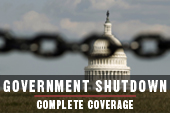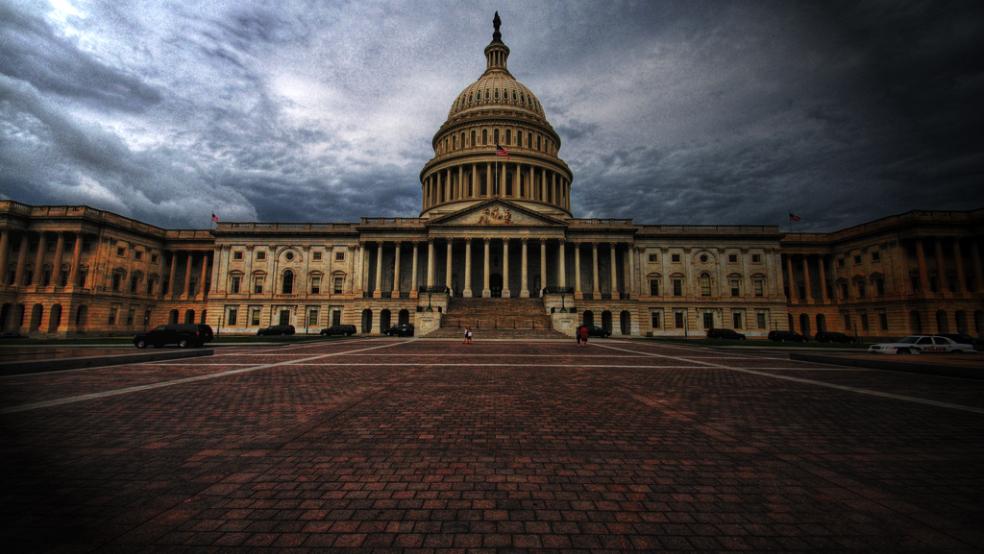Berlin - The adverse economic impact of a U.S. government shutdown was apparent in Europe today, as major European indexes traded lower  because of the impending government shutdown in the U.S. and chaos in the Italian parliament.
because of the impending government shutdown in the U.S. and chaos in the Italian parliament.
House Republicans have sent a government spending bill to the Senate that would delay Obamacare for a year, which Senate leader Harry Reid has said emphatically will not be passed.
That means that on Tuesday, the federal government will not be open for business, leaving approximately 700,000 federal employees on furlough, except for the military and essential services like Medicare. This is the first time in 17 years the government has closed, and the 17th since 1976.
RELATED: HOW BOEHNER AND OBAMA BLEW A PROMISING PARTNERSHIP
Estimates on the economic impacts of the shutdown vary from $40 to $80 million a day, but share one similar prognostication: a government shutdown is bad for the economy. After a bruising half decade of crawling back from recession, it’s unclear just how bad it would be.
Morgan Stanley’s Vincent Reinhart and Ellen Zentner estimated the shutdown would have a direct impact on gross domestic product growth.
"Compensation of non-defense employees and civilian defense employees makes up about one-fifth of real federal spending and about 1.5 percent of GDP. Eliminate a third of that in a shutdown as non-exempt workers stay home, and GDP is haircut 0.5 percent. Annualized, this reduces quarterly GDP growth by around 0.15 percentage points per week of shutdown," they wrote in an analysis of the shutdown.
Meanwhile, Mark Zandi of Moody’s Analytics believes that a shutdown lasting three to four weeks would cut growth by 1.4 points. Without a shutdown, Zandi predicts that the economy would grow by 2.5 percent for the year. A prolonged shutdown would slide that growth to 2.3 percent.
According to the Congressional Research Service, the last government in 1995 and early 1996 shutdown, which lasted 26 days, removed $1.4 billion from the economy ($2.1 billion in today’s dollars). Federal government contractors were hit especially hard, CRS found.
“Of $18 billion in Washington, DC, area contracts, $3.7 billion (over 20 percent) reportedly were affected adversely by the funding lapse," CRS found in an August 2013 report.
The OMB estimated that the 27-day 1995-96 shutdown cost a total of $1.4 billion, or about $2 billion in today’s dollars. Some of the lost revenue in fees and fines would eventually be recouped, according to MSNBC. Divide $2 billion by 27 and you get about $74 million a day.
MANY UNKNOWNS
One of the reasons it is so hard to predict how a possible shutdown would hurt today’s economy is that no one knows how long it would last. CRS found, for instance, that the federal courts would be able to operate for ten days. After that, they would have to close. Other agencies are in similar positions.
RELATED: GOP TAKES BLAME FOR SHUTDOWN, BUT OBAMA ALSO LOSES
But most federal employees would take a temporary hit. Only employees that provide an essential service will continue to work. According to an estimate by USA Today, about 41 percent of non-defense federal workers would be furloughed. The remaining 59 percent would continue to work.
They will eventually be paid when the shutdown ends. Congress could act to restore the pay for the time they missed, as it has in the past.
The same process affects the 1.4-million active-duty soldiers who will continue to show up for work each morning, but they won’t be paid until the shutdown ends.
MIXED BAG ON STOCKS
The stock market could take a deep dive in the event of a shutdown. Markets have traded lower six of the last seven days. Stocks have not typically taken huge dips during past shutdowns.
According to the Associated Press, the S&P 500 index dropped an average of 2.5 percent during past shutdowns that lasted 10 days or more. Shutdowns shorter than five days or less caused a 1.4 percent S&P decline. Surprisingly, during the 1995-1996 shutdown, the S&P actually rose 3 percent.
“If they shut the government down for two days, the world’s not going to stop revolving,” Ron Florance, deputy chief investment officer for Wells Fargo Private Bank, told the AP.





